This document is an introduction to Android malware analysis, presented by Swapnil Pathak as part of an advanced training series. It covers the architecture, security features, application formats, and permissions within the Android operating system, emphasizing the security measures in place to protect against malware. Additional tools and resources for analysis and research are also mentioned, along with acknowledgments to the supporting community.
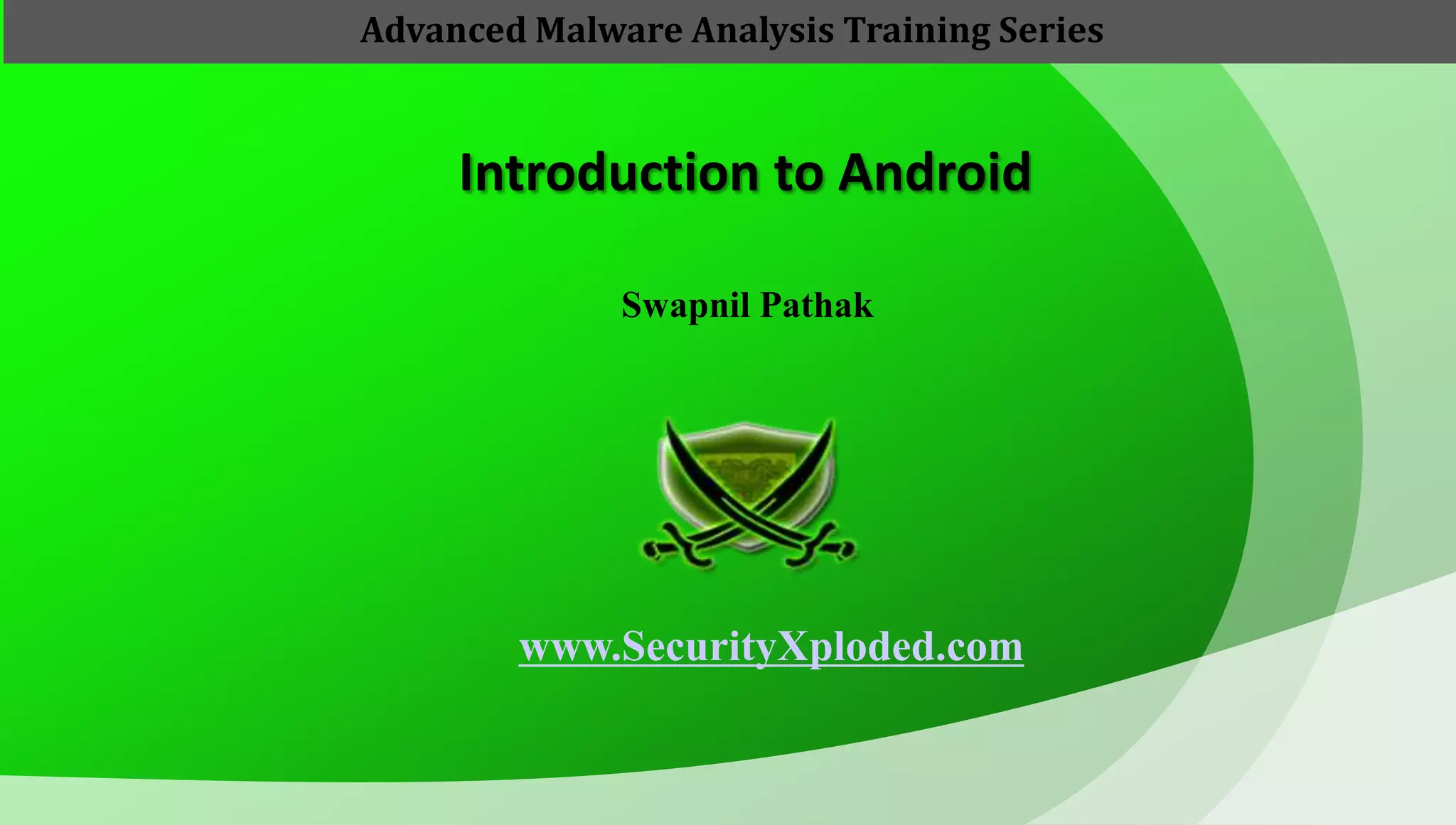
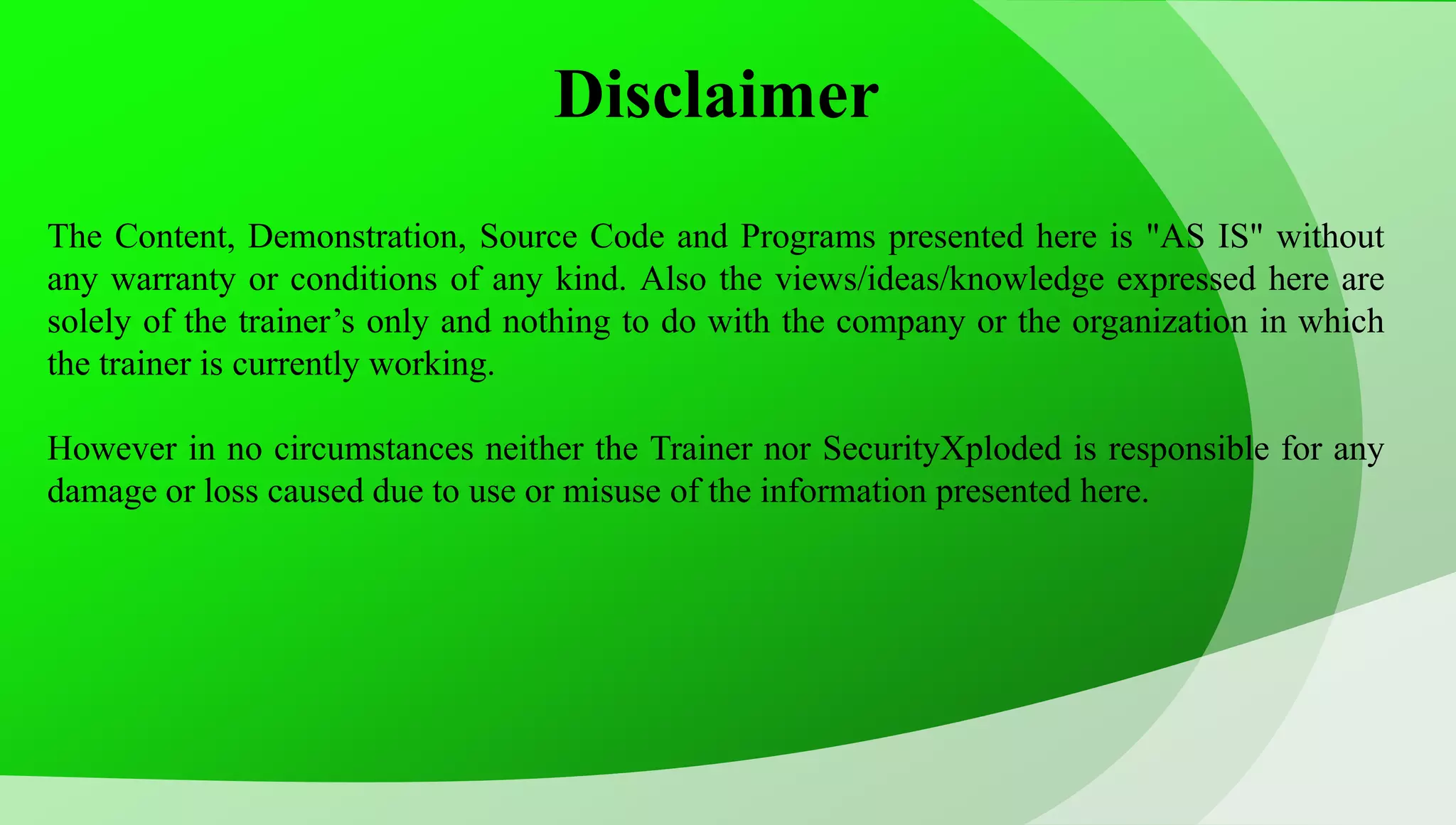



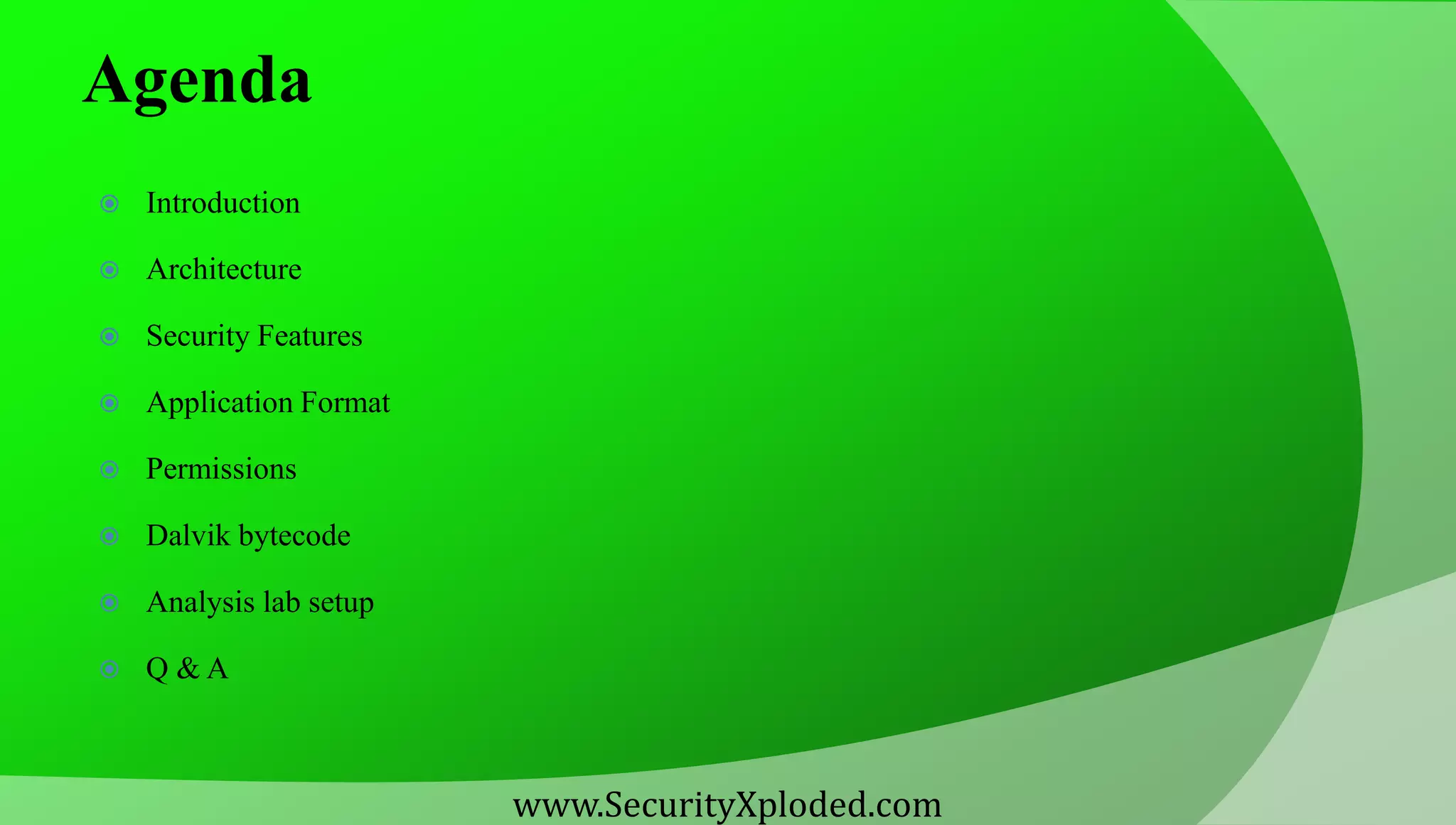


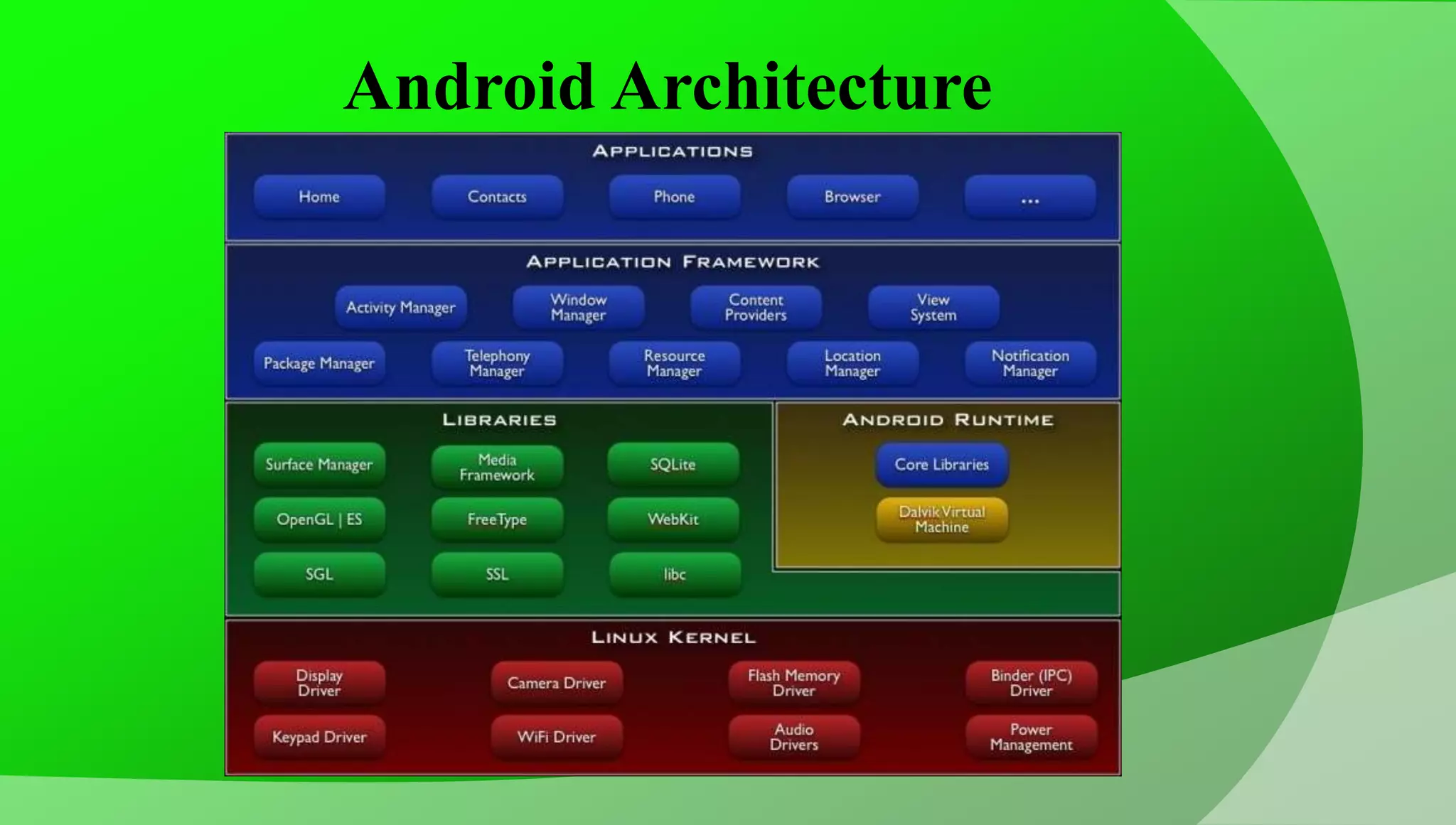
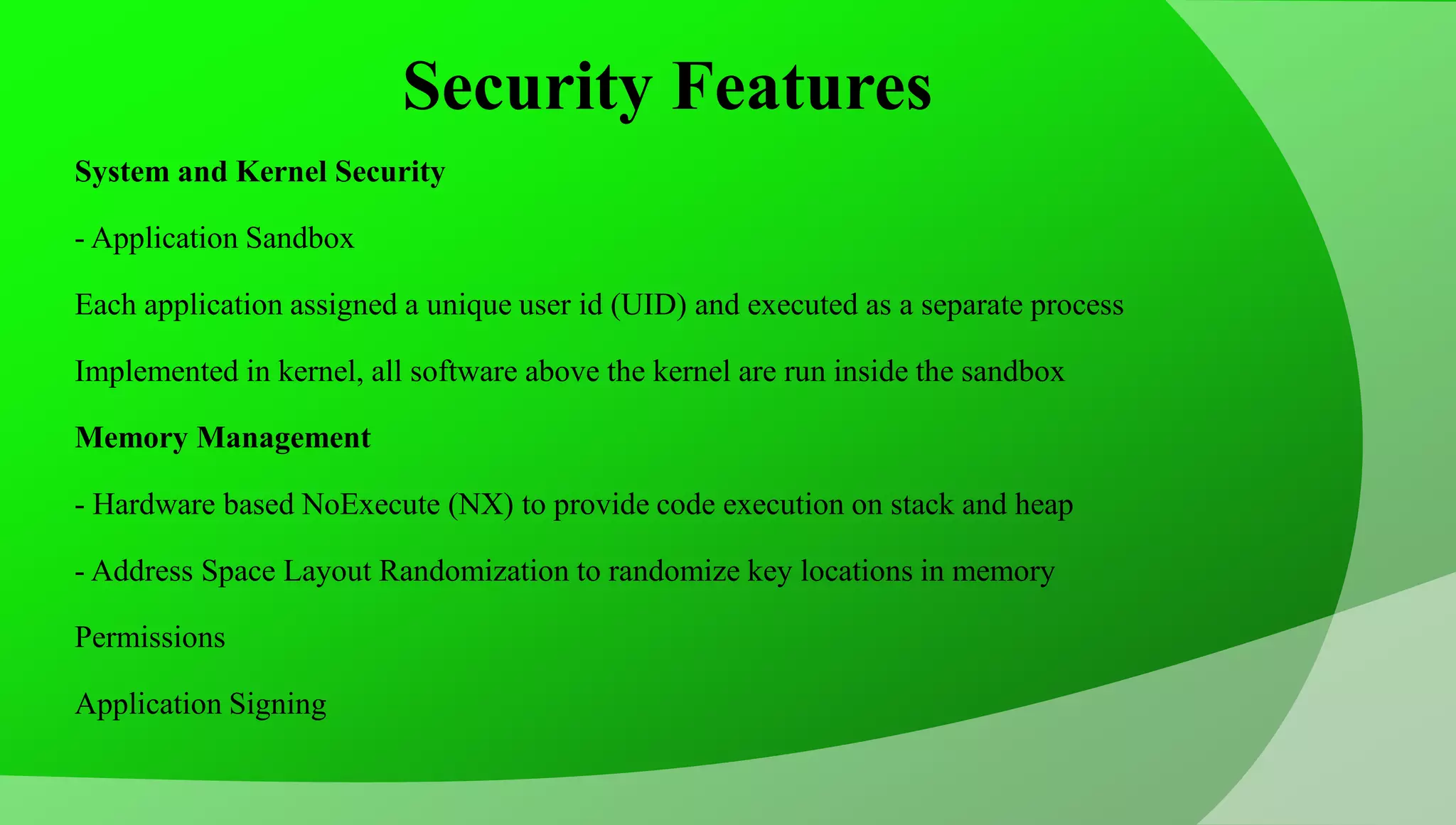

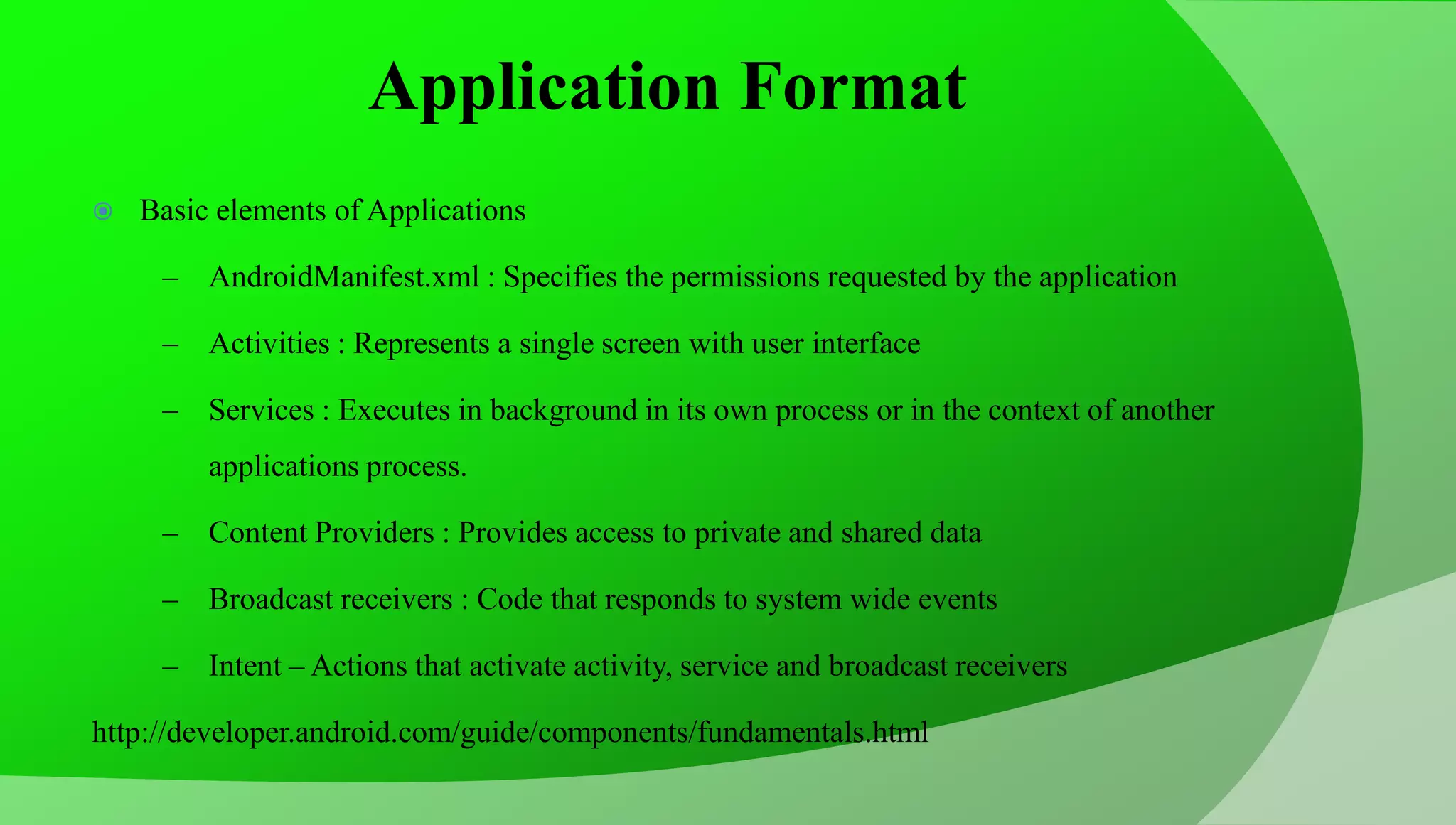
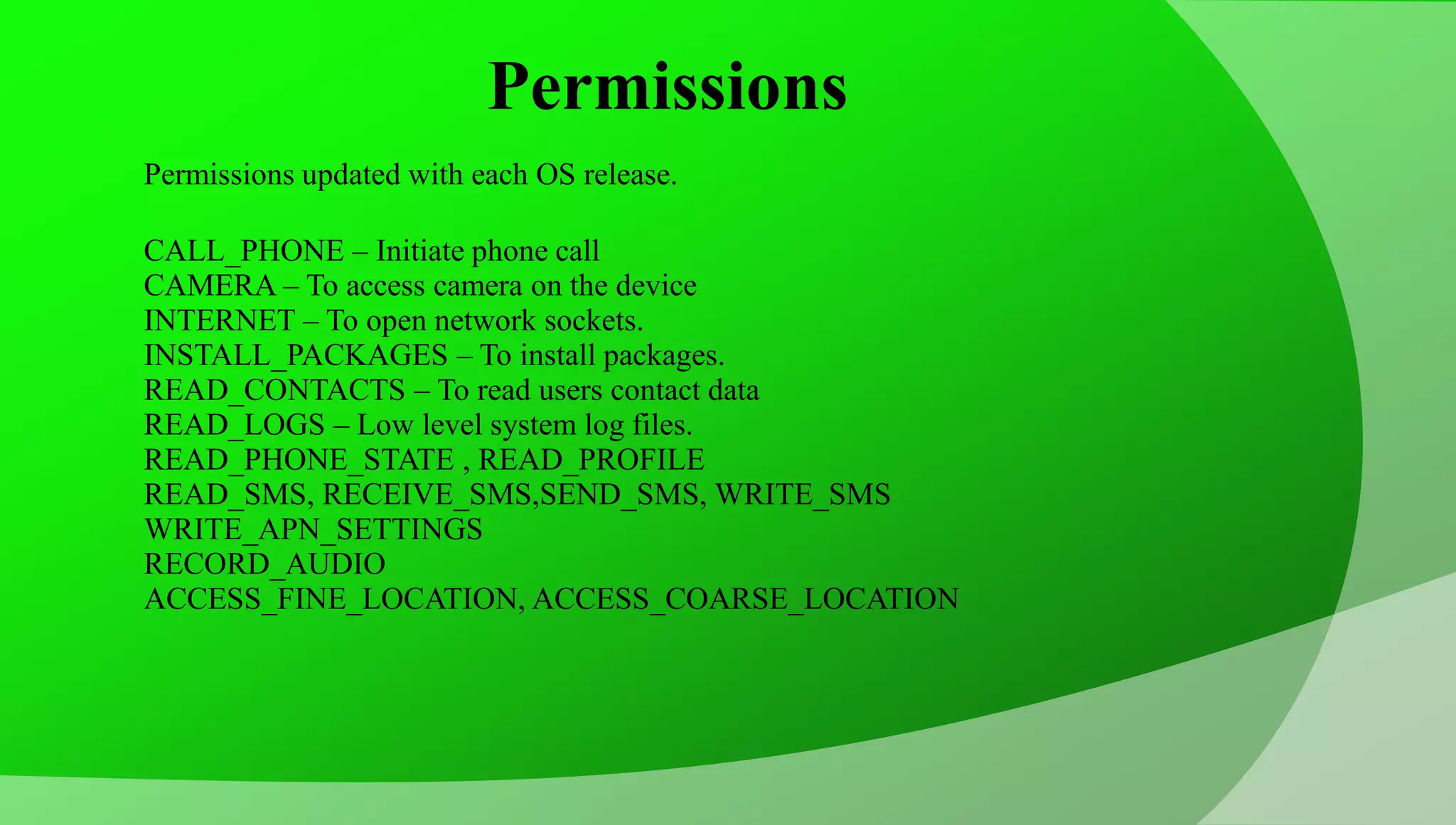

![Dalvik Virtual Machine and Bytecode .method public add(II)I .limit registers 4 ; this: v1 (Ltest2;) ; parameter[0] : v2 (I) ; parameter[1] : v3 (I) add-int v0,v2,v3 ; v0=v2+v3 return v0 .end method](https://image.slidesharecdn.com/advancedmalwareanalysistrainingsession8-introductiontoandroid-130826122308-phpapp01/75/Advanced-Malware-Analysis-Training-Session-8-Introduction-to-Android-15-2048.jpg)
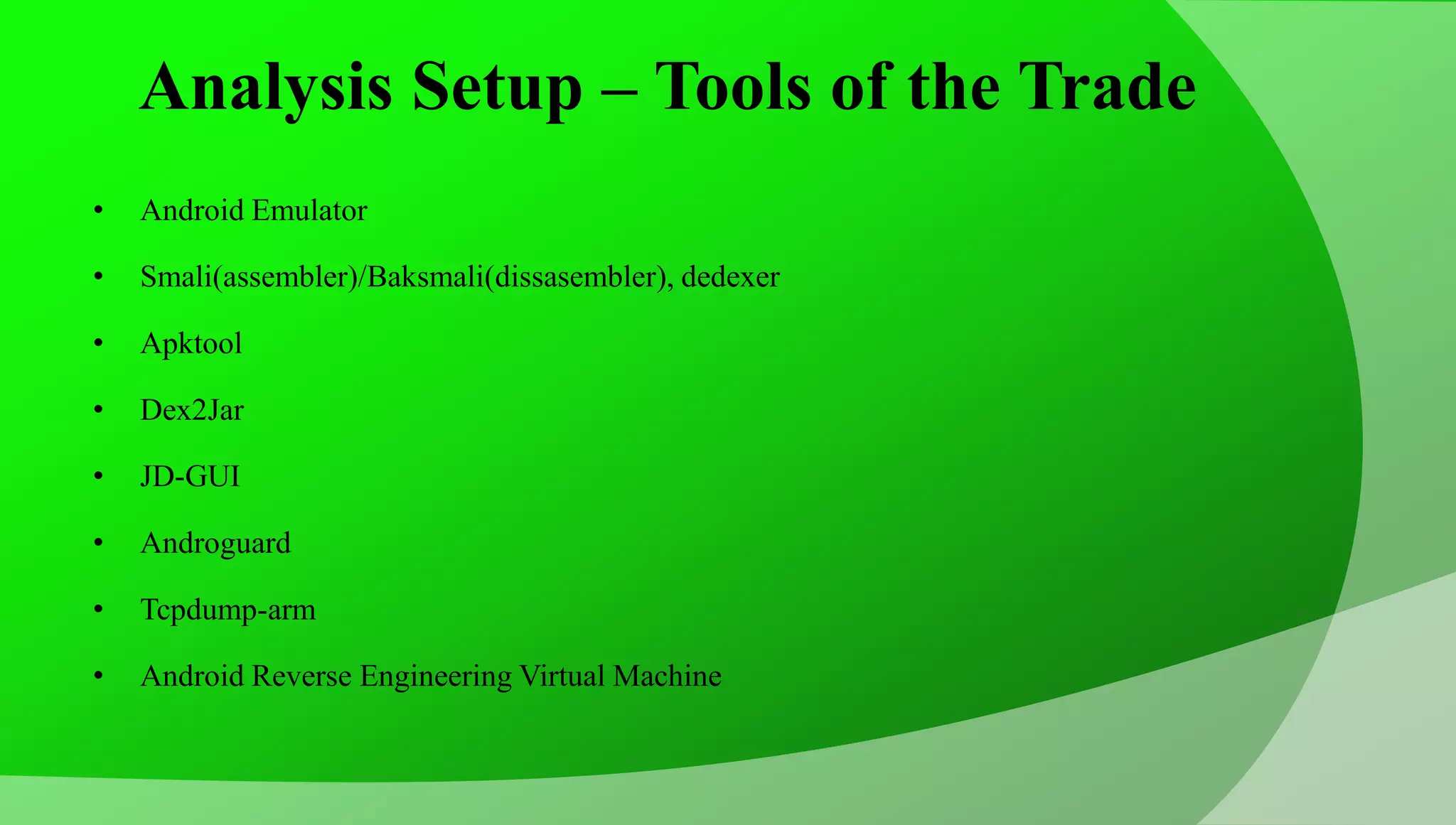

![Reference Complete Reference Guide for Advanced Malware Analysis Training [Include links for all the Demos & Tools] www.SecurityXploded.com](https://image.slidesharecdn.com/advancedmalwareanalysistrainingsession8-introductiontoandroid-130826122308-phpapp01/75/Advanced-Malware-Analysis-Training-Session-8-Introduction-to-Android-18-2048.jpg)
